Automatic Fabric Shrinkage Machine TF176
The Fabric Shrinkage Machine, also known as ISO Washing Machine or fabric Shrinkage Machine, is used to test the size stability of fabrics, clothing, and other textiles after washing. The Automatic Washer meets a lot of Fabric Shrinkage Test Methods such as ISO 5077, ISO 6330, GB/T 8629, GB/T 8630, etc. It can hold 5+/-0.05kg. It has a touchscreen and similar functions to the Wascator.
We also provide an automatic fabric shrinkage rate tester which can calculate all the shrinkage data in 5 seconds!
Description
Application of Automatic Shrinkage Machine TF176
Automatic Fabric Shrinkage Machine TF176, or Fabric Shrinkage Washing Machine TF176, is used for the Shrinkage Test of Fabric by testing the dimensional stability of fabrics, clothing, and other textiles after washing. The Automatic Fabric Shrinkage Machine is also suitable for textile enterprises, quality supervision agencies, commercial inspection agencies, and scientific research institutions to perform shrinkage and relaxation tests on cloth or other textiles such as cotton, animal fur, silk, linen, and chemical fibers after washing.
TESTEX also provides a series of fabric shrinkage rate testing machines.
The Features of Automatic Fabric Shrinkage Machine TF176
The Fabric Shrinkage Machine has flexible and diverse washing programs. It has 16 standard “automatic washing programs” and 8 editable ones. It also has separate manual control programs. This greatly expands its uses.
The Fabric Shrinkage Machine is professional and durable. All of its mechanical systems are custom-made by professional washing machine makers. They are mature and high quality. They can handle long and intense use.
The water level is accurate and the spin is fast. A high-precision contact rod controller ensures this. The famous brand vector frequency conversion motor with high-speed dehydration factor.
The Fabric Shrinkage Machine has strong vibration resistance. Its washing cylinder is connected to the box with a high-performance damper. This keeps the box stable. It happens when the washing cylinder is rolling and vibrating. It stops the whole machine from shaking. The fabric shrinkage machine does not need to be fixed with foot bolts and can be moved and used anywhere.
The main machine of this Wascator is corrosion-resistant, beautiful, and high-grade. Its inner and outer cylinders are made of high-quality stainless steel. The shell of the main machine is also made of stainless steel. So, it has a smooth and neat surface, an anti-corrosion function, and a beautiful appearance.
The fabric shrinkage machine uses an LCD display. It shows the operation procedure and menu mode. This makes it easy for users to control.
Specifications of Automatic Fabric Shrinkage Machine TF176
- Interior rowing box diameter 520 ± 1 cm
- Interior rowing box depth 315 ± 1 cm
- Inside and outside cylinder radial distance 1.7 ± 0.1 cm
- Number of lift sheets 3 pieces
- Raised wing height 5 ± 0.5 cm
- Revolution speed Washing 52r/min, Drying 500±20r/min
- Water Level Control low level = 10cm, high level = 13cm
- Temperature Detection Room temp. ~ 99℃±1℃, readability 0.1℃
- Heating power 5.4 ± 2% KW
- Rated loading capacity 5 +/- 0.05kg
- Rotating Speed 30 ~ 800 r/min(standard factory default speed is optional)
- Interior rowing box volume 70L
Weight of Automatic Fabric Shrinkage Machine TF176
| 200 kg |
Power of Automatic Fabric Shrinkage Machine TF176
| 220/110 V | 50/60 Hz | 6.5 kW |
Dimensions of Automatic Fabric Shrinkage Machine TF176
| Length: 750 mm | Width: 700 mm | Height: 1200 mm |
Standards of Automatic Fabric Shrinkage Machine TF176
| ISO 6330 | ISO 5077 | GB/T 8629 | GB/T 8630 |
Precautions for Operating Automatic Fabric Shrinkage Tester
-
Please strictly adhere to the following scopes when setting parameters on this machine. Exceeding the scopes will invalidate the settings. When setting the water level, the user can only enter (10 or 13) cm, otherwise, it is invalid. Set the water temperature to the normal range, from the operating temperature to 99°C. If not, it’s invalid. When setting the washing, rinsing, and cooling times, the setting time can be 0 to 99 minutes.
-
Make sure the fabric shrinkage machine is on a smooth, solid surface. This will prevent tilting and ensure it operates properly.
-
The inlet pipe must be secured. This prevents water from seeping into the electrical parts. The water could leak and damage them.
-
You need to remove fabric fibers from the filter often. This keeps the drainage pipe clear.
-
Do not open the front glass door when the machine is running. Also, do not open it when the barrel has water. This is to avoid leaks and burns.
The test procedure for dimensional stability of textiles
A complete test procedure consists of a washing process and a drying process. So according to the purpose of fiber and fabric, washing can be divided into two parts: household washing and commercial washing. In general, clothes are generally washed using the home washing procedure. The main test procedures are as follows.
1 Make a specimen according to the standard and also mark it in the direction of length and width.
2 Prepare the automatic shrinkage washer or the fabric shrinkage test machine and drying equipment, then select the appropriate Fabric Shrinkage Test Methods such as AATCC 135, ISO 5077, and ISO 6330.
3 Pre-conditioning the specimen, then starting the test, and finally calculating the dimensional change.
Influencing factors for washing dimensional stability tests
You may be familiar with the clothes shrinking in the washing machine. The main influencing factors are the water temperature, the degree of agitation during washing, the washing time, and the drying method. The main manifestations are as follows.
Firstly, the higher the water temperature, the greater the shrinkage of the fabric.
Secondly, the longer the washing time, the greater the shrinkage of the fabric.
Thirdly, the greater the rotating speed of the automatic shrinkage washer, the greater the shrinkage of the fabric.
In addition, among the drying methods, the shrinkage of the fabric is most significant when tumbling drying, while the shrinkage of the fabric is most minor when flat pressing.
Welcome to TESTEX – a professional textile testing instrument supplier – Automatic Fabric Shrinkage Machine TF176 is on sale, contact us to get a detailed price quote. If you want to know more about the Fabric Shrinkage Test Method, also feel free to contact us.
6 reviews for Automatic Fabric Shrinkage Machine TF176
You must be logged in to post a review.
Automatic Shrinkage Test Method
Test apparatus:
- Automatic shrinkage washer
- ECE non-phosphate detergent
- ICE non-phosphate detergent
- Drying oven
- Scale
- Sewing thread
- Needle
- Pen
- Fabric
Test piece preparation:
Choosing the smooth test piece, the size of it should be greater than 500mm*500mm. Or we can choose the length of the full width at least 500mm if the breath is less than 500mm. Three pairs of tags are marked along the warp and weft of the test piece, the distance between two tags should greater than 350mm, and the distance between the tag and the edge should greater than 50mm. On occasion, we can choose the test piece with 250mm*250mm, three pairs of tags are also marked along the warp and weft of the test piece, the distance between two tags is 200mm.
Test procedure:
- Pouring the detergent into the shrinkage washer, ECE non-phosphate detergent (without fluorescent brightener) and ICE nonphosphate detergent (with fluorescent brightener) are suitable for both type A and type B shrinkage washer.
- Putting the prepared test piece and dummy into the shrinkage washer, and selecting temperature, water-level and time and putting the prepared test piece and dummy into the shrinkage washer.
- After that, we can make the test piece dry in one of the following manners.
- Hang dry. We spread and hang the test piece on the laundry rack to dry it at room temperature.
- Drip dry. We spread and hang the test piece on the laundry rack to dry it at room temperature without spin.
- Lay flat. We flatten the test piece on the horizontal plate smoothly by hand (without any force of spread and twist).
- Flat pressing. We flatten the test piece on the press plate, set the suitable temperature and time, and record the temperature and press.
- Tumble dry. We can dry the test piece by cylinder dryer, and choose the low temperature for heat-sensitive fiber.
- Oven drying. We flatten the test piece on the screen mesh of the drying oven, and set the temperature of 60±5℃ (without any force of spread and twist).
Test measurement:
- The test piece is put on the table without any force of spread, and the shrinkage rate will be got by the ratio scale directly.
- The shrinkage rate can also be calculated from the length of three pairs warp and weft (accurate to 1mm) by the graduated scale, and put the average into the formula.
Test formula:
DC=(B-A)/A*100%
In the equation:
DC - The rate of dimensional change
A - The size before washing
B - The size after washing
Yes, Fully Automatic Shrinkage Tester TF176 belongs to this type.
What is fabric shrinkage?
A: The shrinkage rate of textiles refers to the percentage of fabric shrinkage after washing or soaking.
The smallest shrinkage rate is synthetic fibres and mixed textiles, followed by woollen fabrics, linen fabrics, cotton fabrics in the middle, silk fabrics shrinkage is larger, while the largest is viscose fibres, man-made cotton, man-made wool type fabrics.
What is pre-shrinkage?
Fabric pre-shrinkage is a finish that prevents fabric from shrinking. Shrinkage is the actual reduction in fabric size. The key difference is that pre-shrinking stops shrinkage from happening, while shrinkage measures the actual loss of size.
What do the values '4N' stand for in the test?
The number "4" indicates the temperature, which corresponds to 40℃. The letter "N" signifies the washing action; for instance, "N" stands for normal agitation, "M" represents gentle agitation, "G" also denotes gentle agitation, and "H" indicates imitation hand wash.
What are the shrinkage rates for different fabrics?
Typical shrinkage rates for fabrics are:
- Cotton: 4%–10%
- Synthetic Fabrics: 4%–8%
- Cotton-Polyester Blends: 3.5%–5.5%
- Unbleached White Cloth: 3%
- Woolen Blue Cloth: 3%–4%
- Poplin: 3%–4.5%
- Patterned Fabrics: 3%–3.5%
- Twill Fabric: 4%
- Workwear Fabric: 10%
- Rayon (Artificial Cotton): 10%
Which Instrument can be used to calculate fabric’s shrinkage rate?
The SmartShrink Fabric Shrinkage Rate Tester determines many fabric shrinkage test results in just 5 seconds.
What are the factors affecting shrinkage rates?
Raw Materials: The shrinkage rate varies with the type of raw materials used in the fabric. Generally, fibers with high moisture absorption will expand when soaked in water, increasing their diameter and shortening their length, leading to greater shrinkage. For example, viscose fibers can absorb up to 13% moisture, while synthetic fibers, which have poor moisture absorption, exhibit lower shrinkage rates.
Fabric Density: The density of the fabric affects its shrinkage rate. If the density in the warp and weft directions is similar, the shrinkage rates in these directions will also be similar. Fabrics with high warp density will shrink more in the warp direction, while fabrics with higher weft density will shrink more in the weft direction.
Yarn Thickness: The thickness of the yarn affects shrinkage rates. Fabrics made with thicker yarns generally exhibit greater shrinkage, while fabrics with finer yarns have lower shrinkage rates.
Production Process: Different fabric production processes result in different shrinkage rates. Fabrics that are stretched multiple times during weaving and finishing, and those subjected to higher tension, tend to have greater shrinkage, while those processed with less tension show lower shrinkage.
Fiber Composition: Natural plant fibers (such as cotton and linen) and regenerated plant fibers (such as viscose) absorb moisture and expand more easily compared to synthetic fibers (such as polyester and acrylic), leading to higher shrinkage rates.
Fabric Structure: Generally, woven fabrics have better dimensional stability than knitted fabrics. High-density fabrics are more stable than low-density ones. Among woven fabrics, plain weave typically has lower shrinkage than flannel, while in knitted fabrics, plain knit has lower shrinkage compared to ribbed knit.
Production and Processing: During dyeing, printing, and finishing processes, fabrics are inevitably stretched by machines, introducing tension into the fabric. When the fabric encounters water, this tension is often released, leading to noticeable shrinkage after washing.
Washing and Care: Washing, drying, and ironing all impact fabric shrinkage. For instance, hand-washed samples generally maintain their dimensions better than machine-washed samples. Washing temperature also affects dimensional stability; higher temperatures usually result in greater shrinkage. Additionally, the drying method can significantly influence the fabric's shrinkage rate.

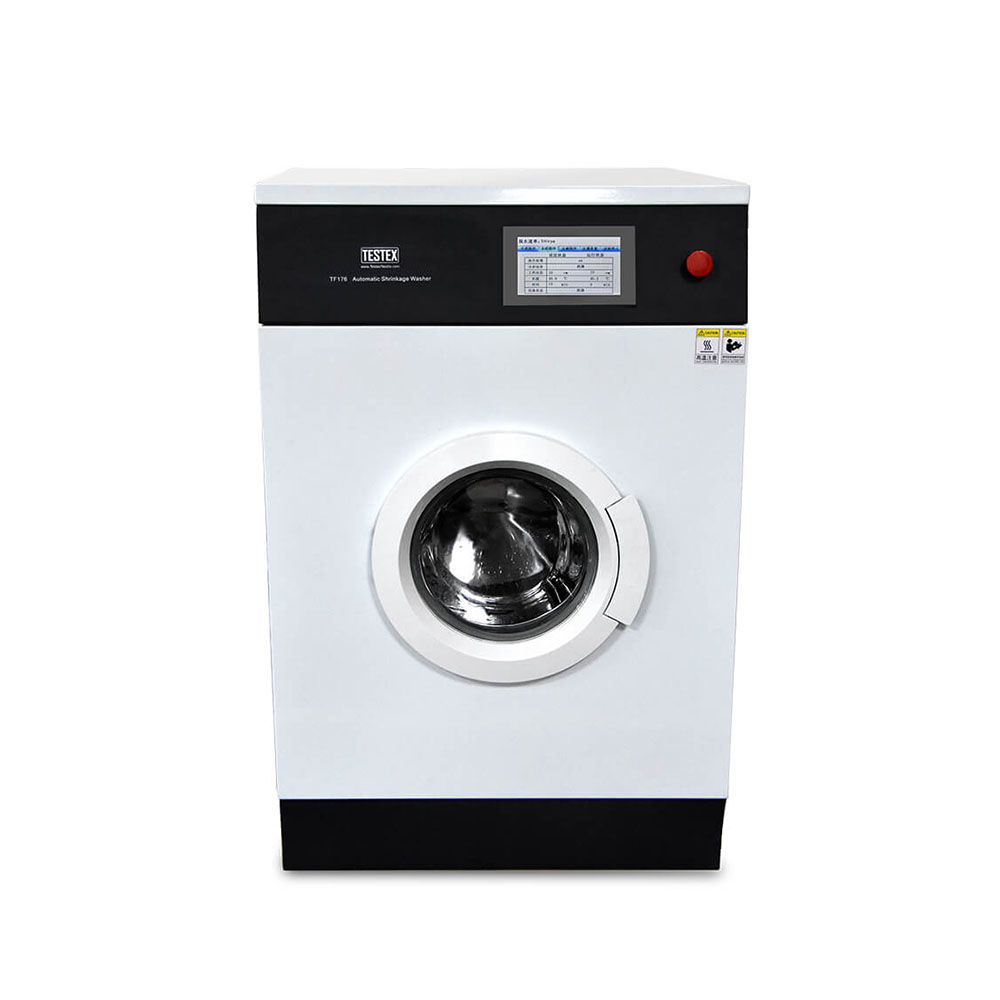
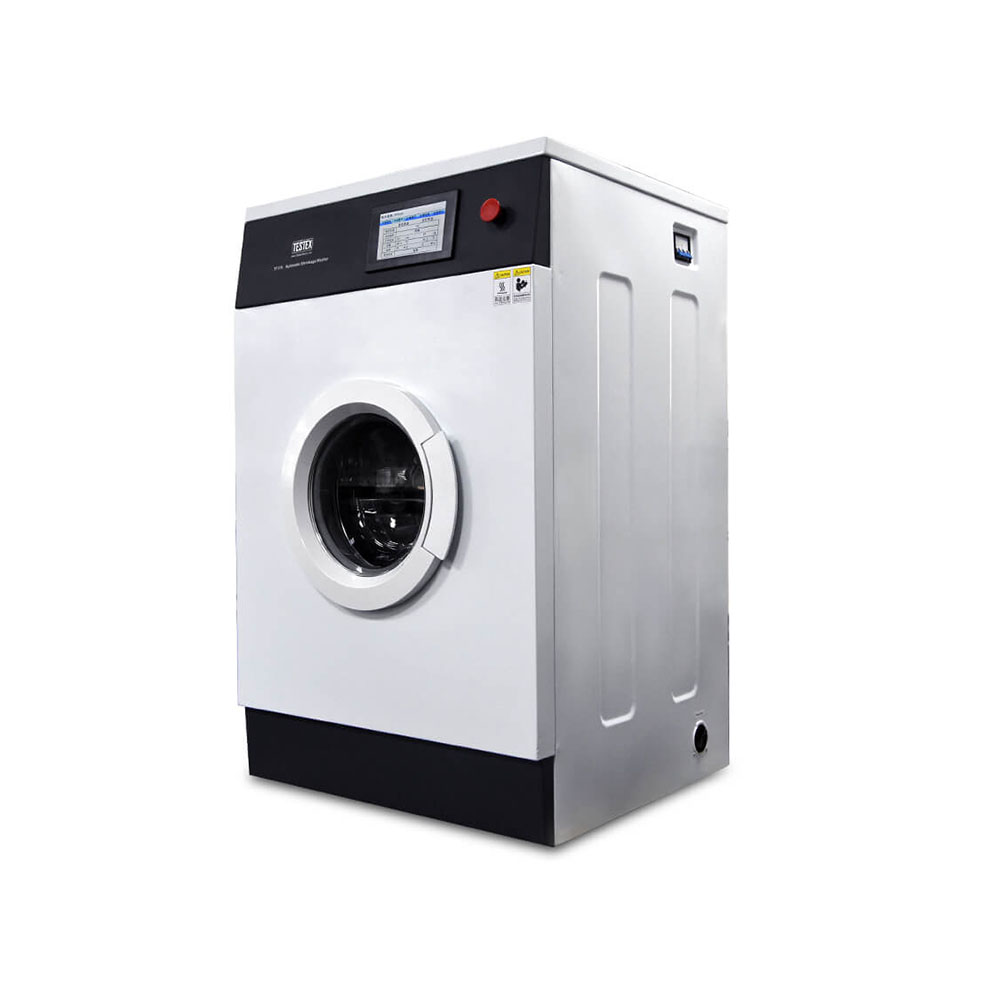
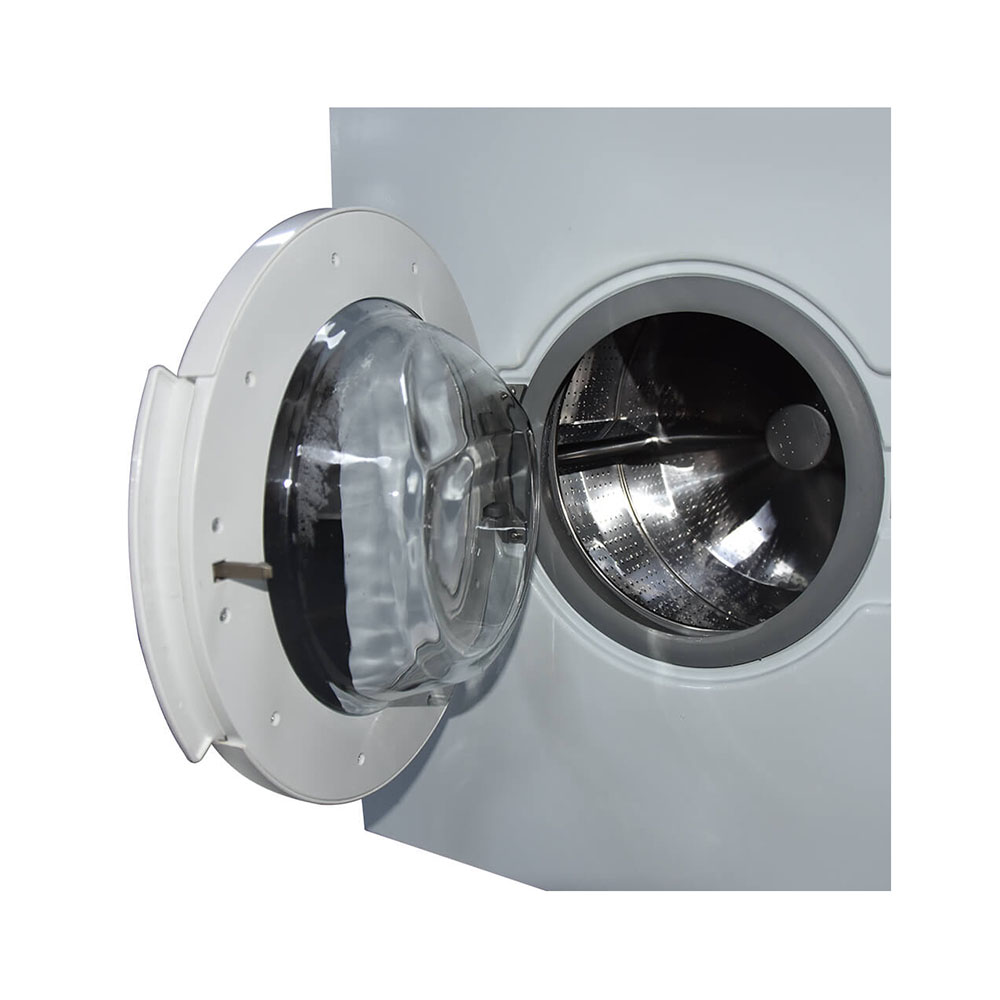
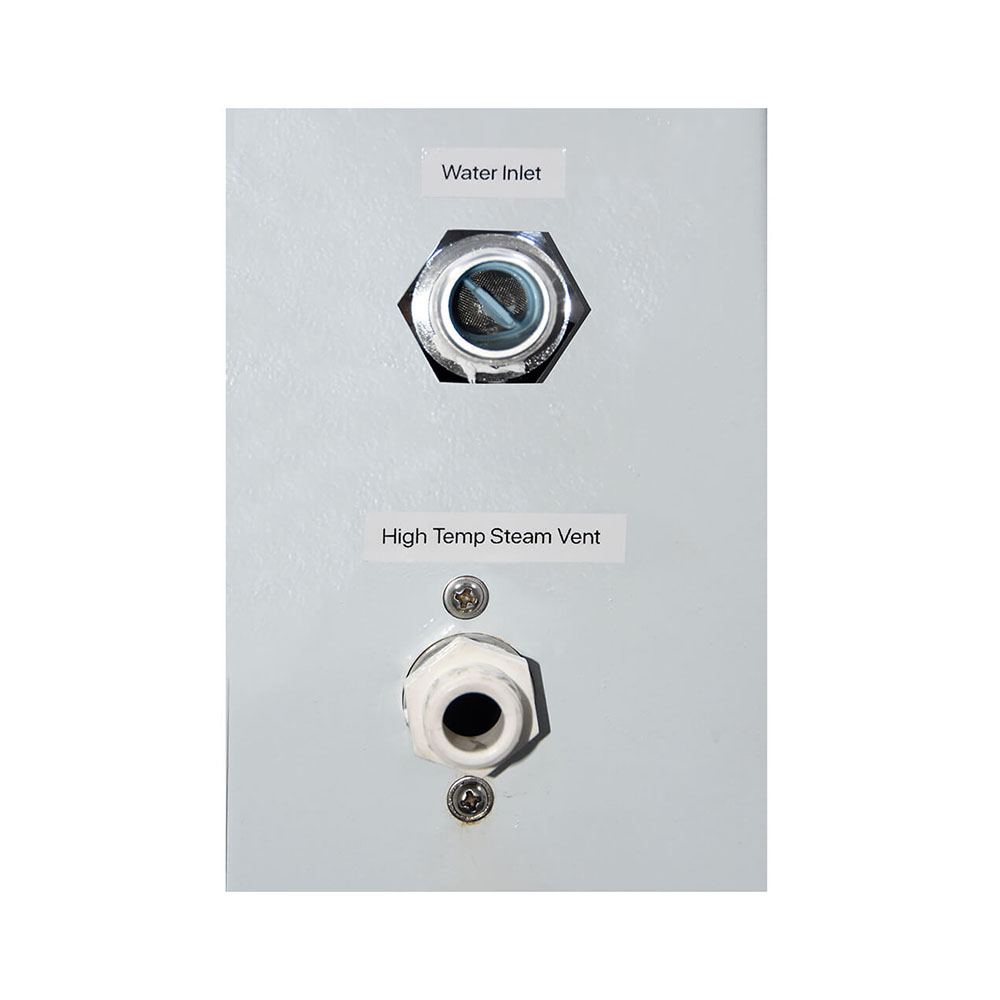
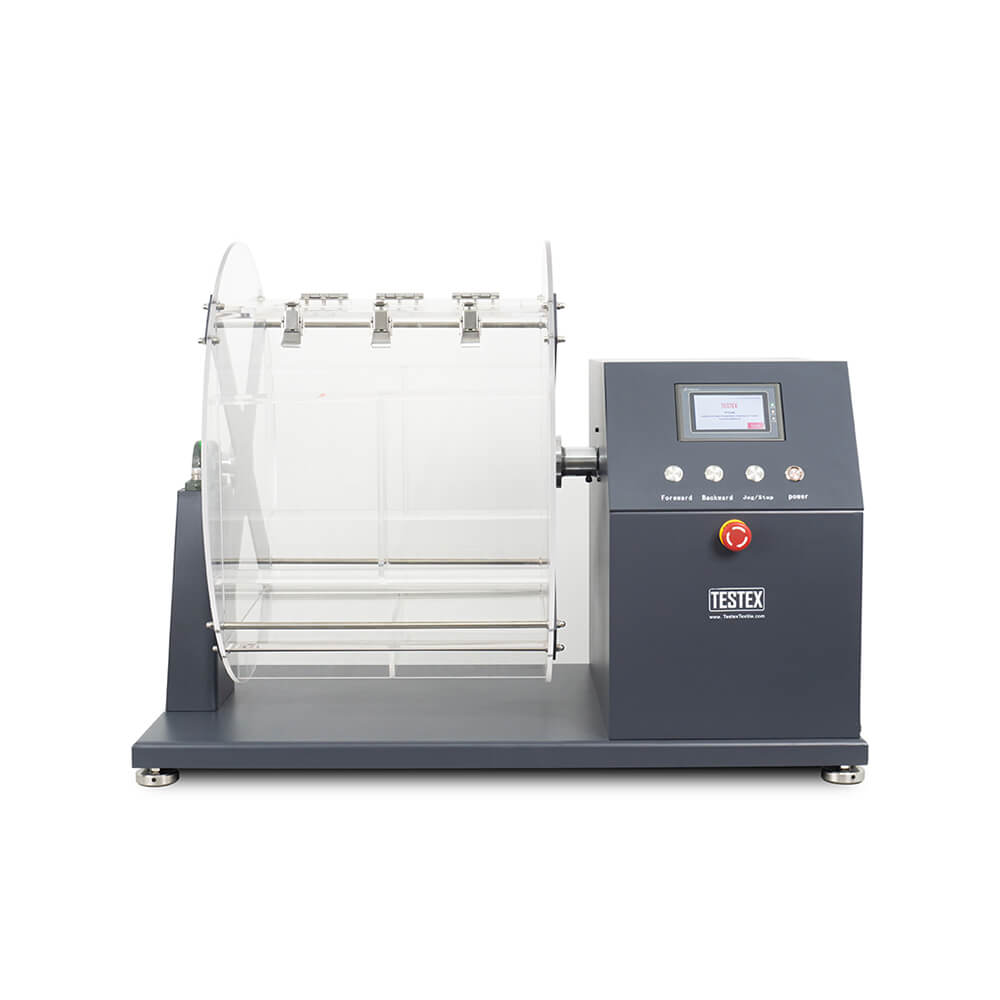
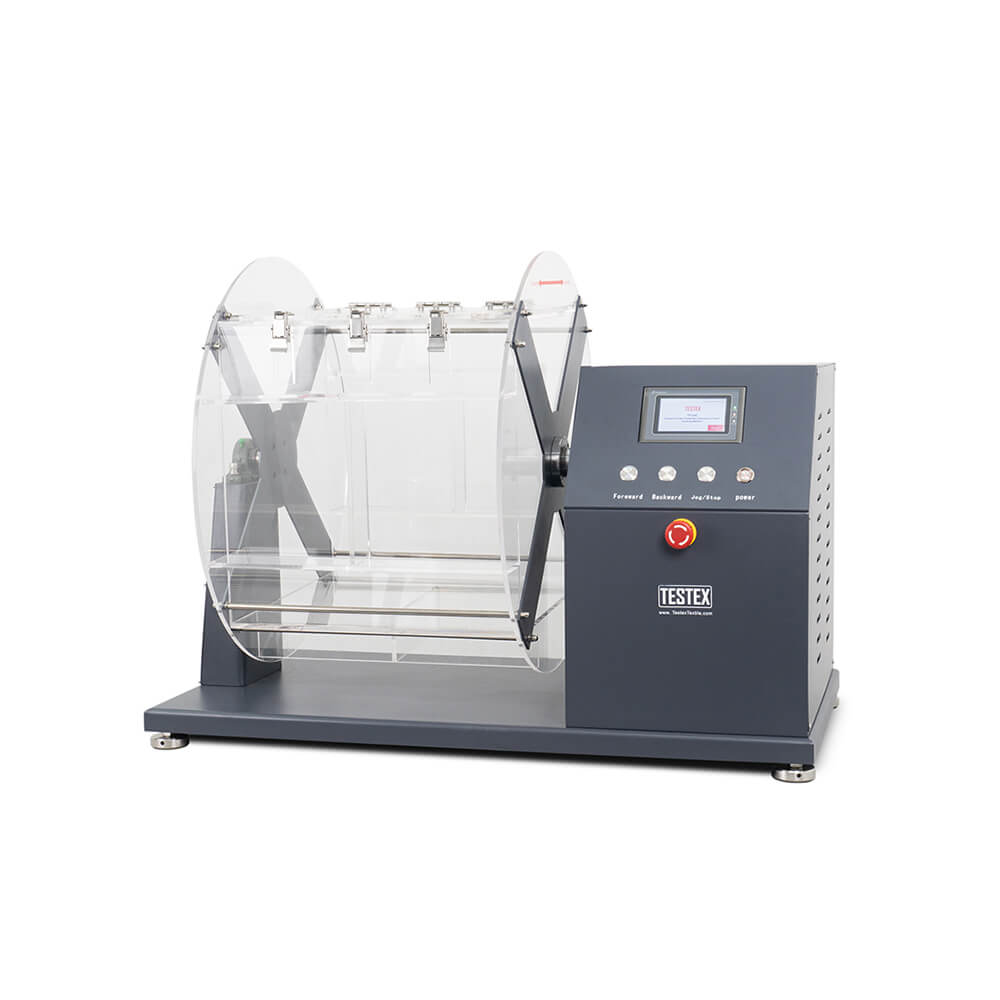
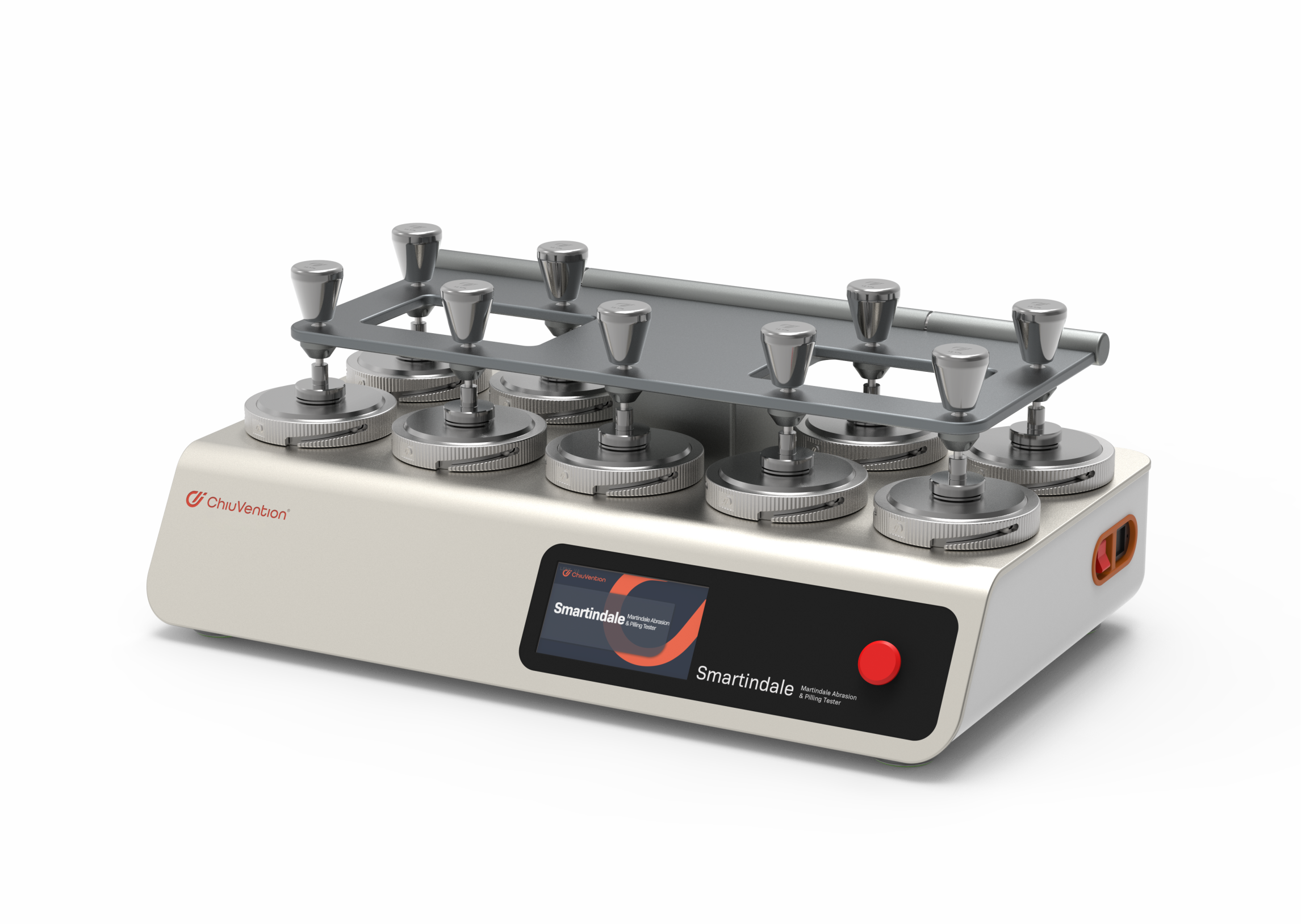
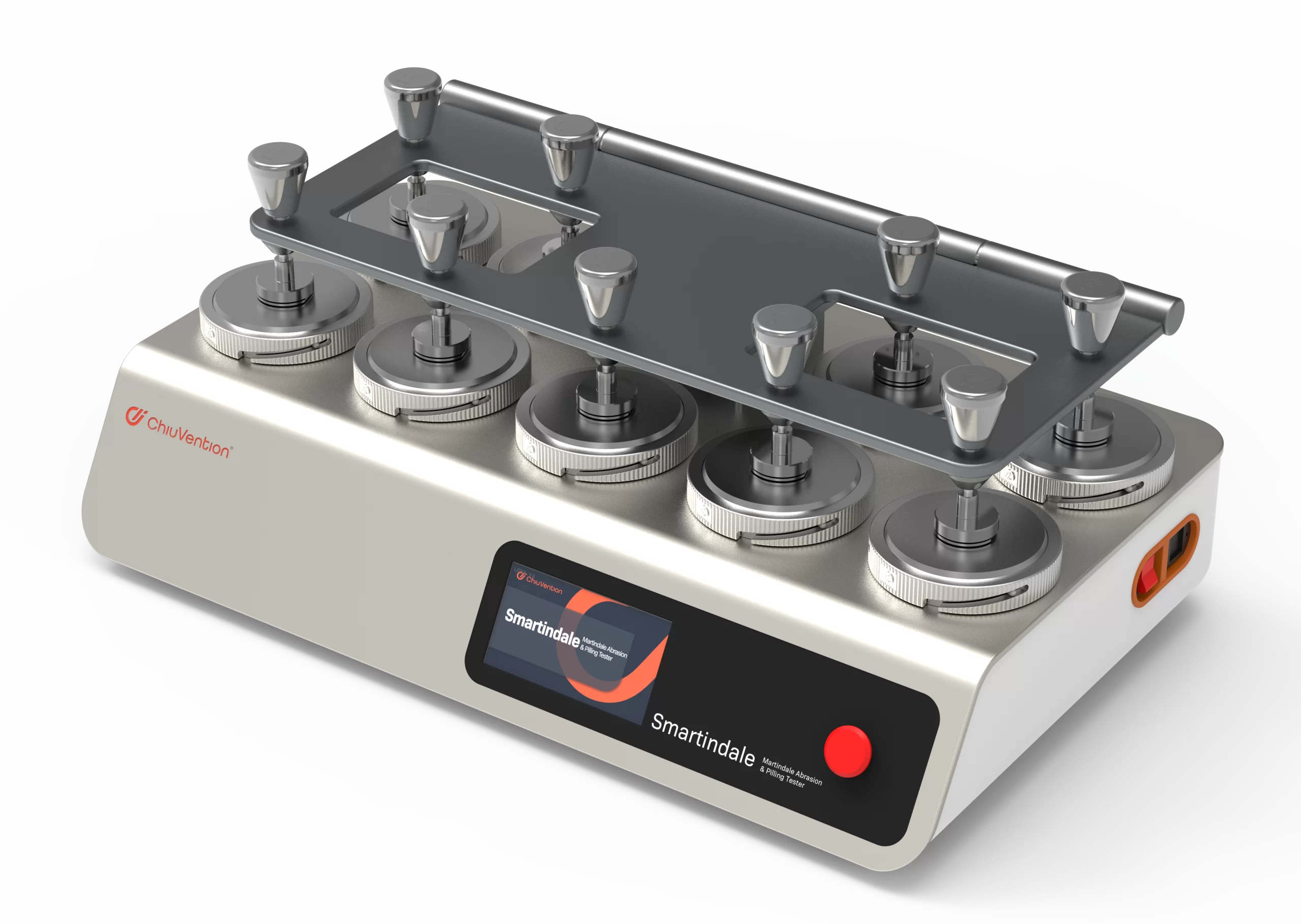
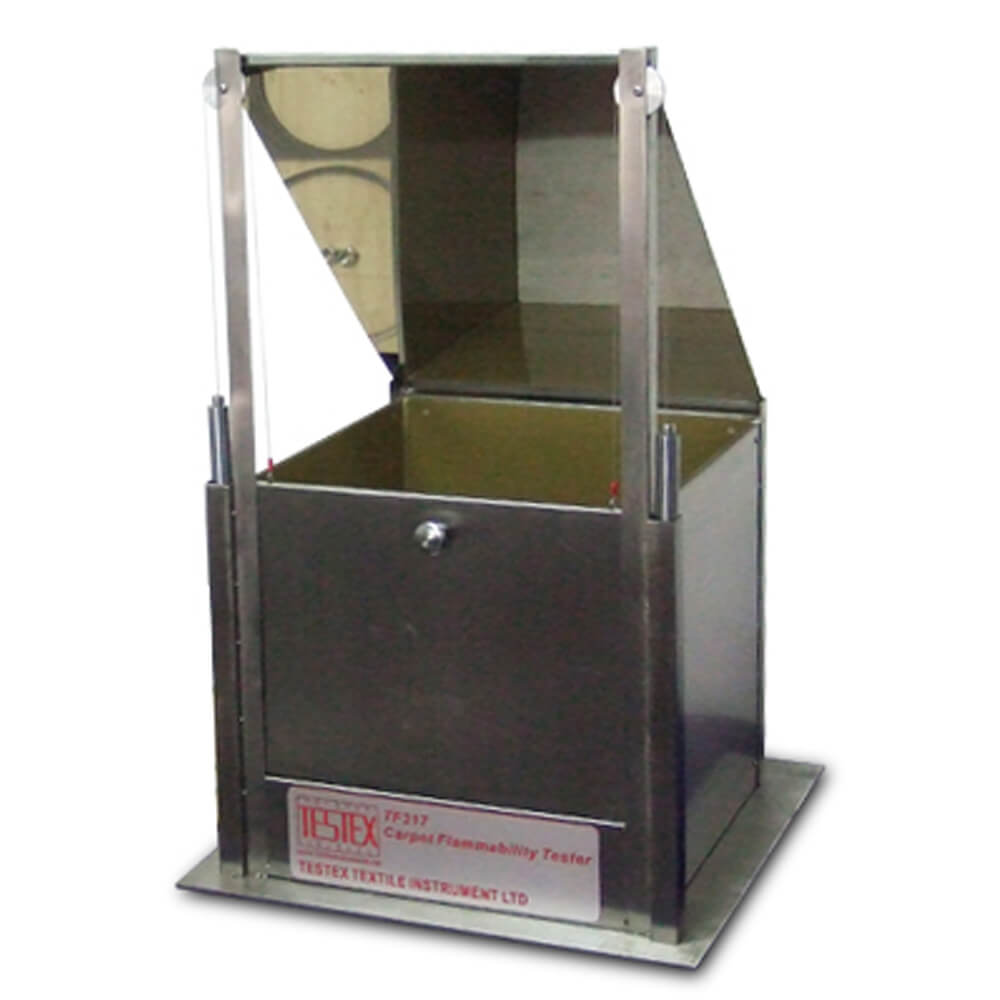

Linda Jim –
Great for my needs.
Murray Harrison –
Godds Received. I can complain nothing about it.
Josiah –
I appreciate this shrinkage tester, it is good for my lab’s test, especially for the result.
Dominic Symons –
Thanks, manufacturers of the auto-shrinkage tester. With the machine, our research goes more smooth.
testextextile –
We are so glad that you are contented with our machines. Expect our next cooperation.
Warner Louisa –
all ok. I’m satisfied . good seller. fast shiping.
Astrid Ruth.W –
Received very fast. Works as expected. Good communication with seller.
testextextile –
We are appreciate to communicate with you,looking forward to the next cooperation!:)